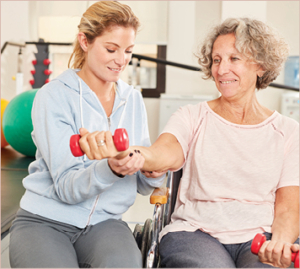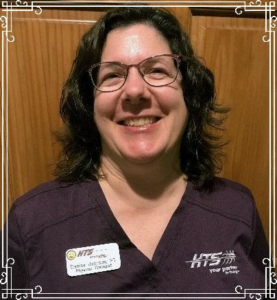Why is hand and grip strength so important? Having a strong grip makes it easier to perform normal daily tasks like holding a coffee cup, carrying grocery bags, or brushing your teeth. Research has shown that a person’s grip strength can be an indicator for overall muscle strength, upper limb function, bone mineral density, increased fractures and falls, and overall quality of life.
It’s common as we age to see a decrease in grip strength due to natural age-related loss of strength and muscle mass. Additionally, other causes may include scar tissue, carpal tunnel, arthritis, and nerve or tendon damage. As a result, a person may experience trouble holding and opening items and other activities they enjoy.
Now that we recognize why grip strength is so important, below are exercises that can help to improve your overall hand and grip strength.
- Improve Crush Grip (ability to squeeze something between your fingers and palms) with hand strengthening equipment like stress balls, therapy putty, and hand exercisers.
- Improve Finger Strength & Dexterity with a finger-walking exercise. Put your hand on a table, palm facing down. Slowly lift each finger moving toward the thumb.
- Improve Support Grip (ability to hold on to an object) with farmer carries. Hold a weight or bag and walk with it across the length of the room, then turn around and walk back.
- Improve Pinch Grip (the grip strength between the tips of your four fingers and thumb) by pinching clothespins or using tweezers to manipulate small objects.
- Improve Hand Range of Motion with finger stretches. Put your palm down on the table, straighten your fingers, hold the stretch for 30-60 seconds, and release.
Physical & Occupational Therapy Can Help! If you are having difficulty with hand strength or pain due to weakness, injury, or illness, you may find that performing a simple task is troublesome. Physical therapists recommend exercises to improve range of motion, build strength, and regain function. Occupational therapists offer strategies to overcome challenges so you can fully participate in daily and leisurely activities.





 THERAPY’S ROLE IN STRESS MANAGEMENT
THERAPY’S ROLE IN STRESS MANAGEMENT
